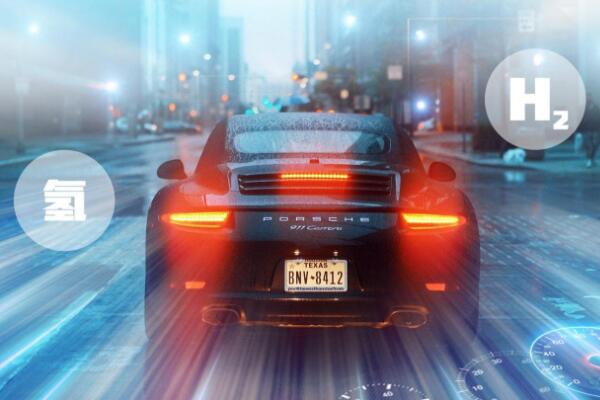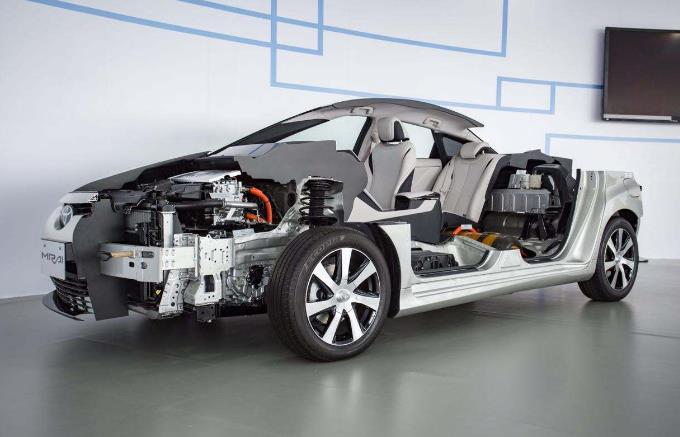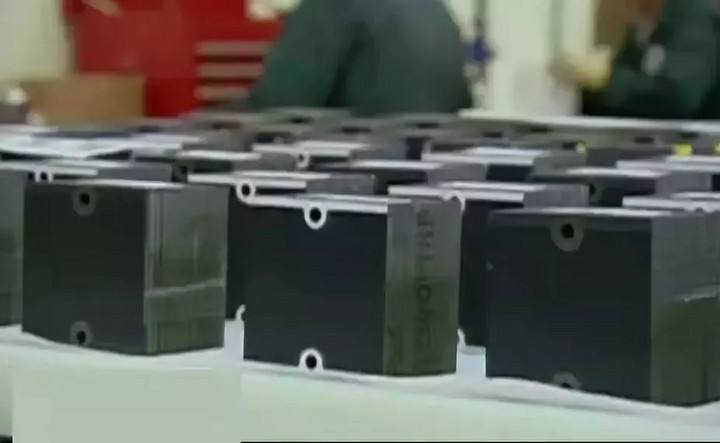Fuel cell vehicles are a type of new energy vehicles. In the electric vehicle terminology GB/T 1956 2017, fuel cell electric vehicles are defined as fuel cell systems as a single power source or as fuel cell systems and rechargeable storage. An electric vehicle that can be used as a hybrid power source. At present, fuel cell vehicles in the industry are mostly hydrogen fuel cell vehicles. In May 2018, Premier Li Keqiang visited Japan to visit the Toyota Hokkaido factory and inspected the Japanese fuel cell vehicle.

Many experts said that we should pay attention to fuel cell vehicles
After the Prime Minister returned to China, the hydrogen fuel cell became the focus of the new energy automobile industry. The multi-ministerial committee of the State Council established a hydrogen fuel cell joint group to accelerate the development of the hydrogen fuel cell industry in China. Therefore, it is also considered to be a hydrogen fuel cell in 2018. The first year. Not only has the government gradually introduced policies to support its development, more and more companies have begun to deploy hydrogen fuel cell vehicles, and many industry experts have also expressed their views on hydrogen fuel cells.
Ouyang Minggao once said that China should adhere to the pure electric strategy and promote the development of hybrid and fuel cell vehicles on this basis. This strategy is based on pure electric power. The first step is to realize the industrialization of pure electric power and develop the battery industry. Then, based on the pure electric industrialization, the plug-in hybrid will be gradually promoted. Finally, the foundation in the previous Advance the development of the same hybrid and fuel cell as the international one.
On December 15, Wan Gang, vice chairman of the National Committee of the Chinese People's Political Consultative Conference and chairman of the China Association for Science and Technology, published an article entitled "Promoting the Healthy Development of the New Energy Vehicle Industry" in the 6th edition of the People's Daily. Wan Gang said in the article: "The short board of pure electric vehicles is the driving range and charging time, and it is still unable to meet the market demand of large-scale remote bus, double-class rental, urban logistics, long-distance transportation, etc. Focus on industrialization to fuel cell vehicles."
In addition, Wan Gang also said that China manages hydrogen as a hazardous chemical, which restricts the use of hydrogen energy in China. “Developed countries have used hydrogen as energy management, created a scientific and safe hydrogen filling station construction and on-board hydrogen tank technical standards and testing systems, which has effectively promoted the commercialization of fuel cell vehicles.” Wan Gang suggested in the article that relevant departments should pay close attention to research. Drawing lessons, formulate scientific and safe technical standards for hydrogen energy, hydrogen refueling stations and hydrogen storage tanks, improve detection capabilities, eliminate standard test obstacles and market access barriers that restrict the development of hydrogen energy and fuel cell vehicles, and strengthen and improve hydrogen production. Construction of storage and transportation and supply and marketing systems.

High subsidies promote the development of hydrogen fuel cell vehicles
According to statistics, China currently has more than 2,000 hydrogen fuel cell vehicles and 12 hydrogen refueling stations. In order to support the development of hydrogen fuel cell vehicles, China has also given special preferential treatments for hydrogen fuel cell vehicles in the subsidy policy for new energy vehicles.
The tram resources learned that in the "Medium and Long-term Development Plan for the Automotive Industry" jointly issued by the Ministry of Industry and Information Technology, the National Development and Reform Commission and the Ministry of Science and Technology in 2017, fuel cell vehicles were listed as key support areas. In addition, according to the “National Fuel Cell Development Roadmap” issued by China, by 2020, 2025 and 2030, the scale of China's fuel cell vehicles will reach 5,000, 50,000 and 1,000,000 respectively, and hydrogenation will be completed by 2030. 1000 stations, hydrogen fuel cell vehicles entered the mass production stage.
In June 2018, the new energy financial subsidy was implemented in 2018. The subsidy standard for fuel cell vehicles was unchanged compared with last year. The subsidy standard for passenger cars was 6,000 yuan/kW, and the subsidy ceiling was 200,000 yuan per vehicle. The maximum subsidy for trucks is 300,000 yuan per vehicle; the maximum subsidy for large and medium-sized passenger vehicles and medium and heavy-duty trucks is 500,000 yuan per vehicle. This is very rare in the case of subsidies of other types of new energy vehicles up to 50%, and also shows the government's determination to support the development of hydrogen fuel cell vehicles. High subsidies are becoming an important driving force for the development of hydrogen fuel cell vehicles. China's fuel cell vehicles have taken the lead in the commercial vehicle sector, and the promotion of passenger vehicles will take longer.

Lack of core technology is the biggest obstacle to commercialization
As we all know, there are still many obstacles to the development of hydrogen fuel cell vehicles, such as high cost of hydrogen fuel, insufficient supporting facilities such as hydrogen refueling stations, technical standards and backward detection systems, etc., but one of the most important factors affecting the commercialization of hydrogen fuel cell vehicles is The lack of core technologies for key components is also one of the reasons for the high cost of hydrogen fuel cell vehicles in China.
At present, most of the hydrogen fuel cell vehicles loaded in China use foreign power reactors and technologies, and the proportion is estimated to be over 70%. Previously, Wang Cheng, director of the hydrogen fuel cell laboratory at Tsinghua University, gave a set of relevant data. Most of the catalysts tested for more than a thousand vehicles were imported, and almost all of the membrane electrodes were imported. The production of platinum as a catalyst for hydrogen fuel cells is low and expensive. Under the current technical conditions in China, the amount of platinum cannot be reduced. In addition, key components such as air compressors for compressing gases and hydrogen sensors for measuring gas leaks have not yet achieved technological breakthroughs. The cost of hydrogen fuel cell vehicles is high due to the import of key components, and the commercialization of hydrogen fuel cell vehicles is difficult to achieve.
Summary: Although there are still many problems on the road of commercialization of hydrogen fuel cell vehicles, as long as enterprises sink their minds and carry out technical breakthroughs and product research and development, with the joint efforts of our government and industry, these problems will eventually be one by one. Break through. The road to commercialization of hydrogen fuel cell vehicles is still very long. We still don't know what will happen in the future, but as long as we keep this road firmly, the results deserve everyone's expectations.
















 RCCN WeChat QrCode
RCCN WeChat QrCode Mobile WebSite
Mobile WebSite